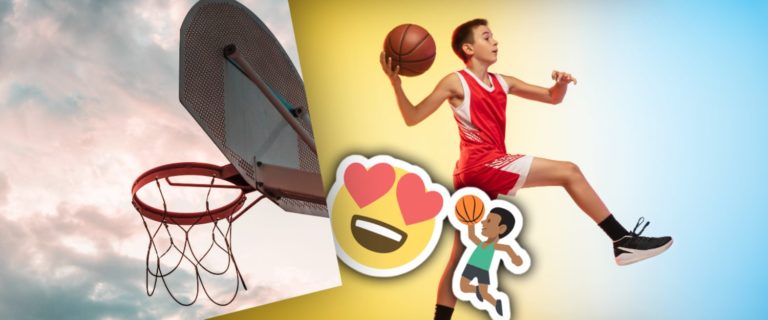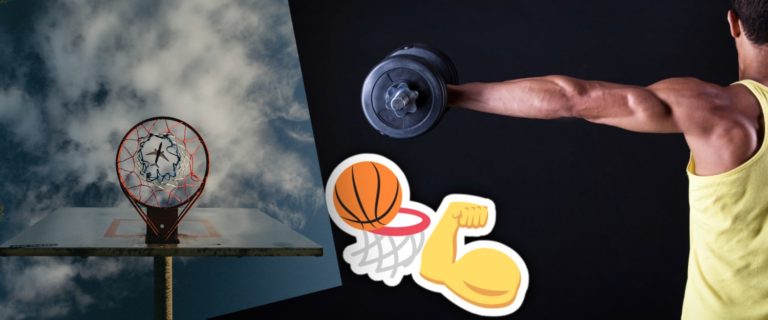All You Need To Know About NBA Trade Rules
The NBA Trade Rules are a set of guidelines that teams follow to trade players and assets with one another. It is important for people who love the sport and want to know how trades work in the National Basketball Association, to understand these rules. We’ll discuss some historical information concerning trades in this blog article. Also included are the kinds of deals that may be performed during a season between two teams.
What is a Trade in the NBA?
In the NBA, a trade is when two clubs exchange players and assets. Trades may be made in one of three ways in the NBA: in advance, simultaneously, or after the regular season has ended.
Different Types of Trades in the NBA
Pre-Arranged Trades
A pre-arranged deal can be made between any number of teams that have enough cap space to fill every position on both squads simultaneously. This is the first sort of transaction. These types of deals must happen between June 30th and July 15th every year.
Players who were recently selected by the team they are being moved from cannot be included in these deals due to salary cap regulations surrounding signing current free agents during those dates. Moreover, draft picks (the only exception being if it was their choice).
Simultaneous Trades
Simultaneous trade is the second category of trade. It occurs when two teams with matching pieces (i.e., the same contract) agree to transact at a time of their choosing, but they are required to immediately notify both players involved in the transaction and their respective owners.
Each team must have sufficient cap space for every position on its roster, or be able to negotiate different pay implications, if necessary, for that position.
These types of trades usually occur right before the NBA season’s trade deadline. Trade deadlines every season are mostly scheduled on the 2nd week of February.
After The Season Trade Deadline
Last but not least, teams can make a trade after the regular season, which runs from April to June, to cover needs that they weren’t able to meet during the regular season. At this point, it is simpler for NBA clubs to re-sign their free agents and, if necessary or desired, to sign players from other organizations.

Trades During The NBA Season
In terms of what types of trades take place throughout an NBA regular season and playoffs. There are also three distinct categories: player swaps, cash considerations, and future picks.
Player Swap
A player swap is when two teams agree to essentially give one another equal value on both sides by swapping contracts with each other instead of salary implications; this occurs between different positions due to either height or skill set requirements being met.
Cash Considerations
Cash considerations happen when one team pays part, or the entire salary of one player to receive another contract from a separate team.
Future picks
Lastly, trading future draft picks entirely depends on the team’s direction. If a team is in a win-now situation, they can trade their future draft pick for a veteran player who has more experience and can give impact right off the bat. After all, drafting a player out of college takes time to develop and adjust to the NBA.
Meanwhile, if a team wants to rebuild, they can trade their current star player for a couple of future first-round picks. This ensures that a rebuilding team can get new talent(s) to start over again. They covet high draft picks due to the amount of talent out of college, and even overseas players
Additional Rules
Additionally, some rules must be followed whenever trades take place between NBA franchises including any traded draft picks or cash involved cannot go back until after 12 months have passed since the initial deal was made.
This promotes equality across the league. Because no single organization can accumulate all of its draft picks, use them to select promising young stars, and then exchange those same assets. building dynasties, in essence, every year around Draft Day.
What Are the Trade Rules?
The NBA trade rules consider any time during the year when a player changes hands from one team to another, as a trade. The most common type of trades in the NBA is between two teams and involves players or assets being exchanged.
Both sides must abide by rules established by the league in these kinds of deals. They need to keep their relationships strong with one another in order to continue doing business together in the future.
Draft Day Trades
Every season, trades also take place around Draft Day. This entails the transfer of draft picks between two cities. without involve actual players currently on either roster. These actions don’t need the consent of both parties. But for these interactions to be valid, there must be parity between the parties.
The 24-Hour Window
To give both parties time to discuss compensation and any prospective deals that might arise later during free agency, the NBA mandates that teams who trade players with one another must make the moves official within 24 hours of one another. Perhaps even the following season, when such actions are considerably more likely.
No Cash Involved!
NBA trade regulations further state that no two teams can agree on a deal involving cash because money must be sent directly between accounts without the use of a third party, ensuring that there is never any doubt as to what was received in exchange for what.
Review of Trades By The NBA
Also, the league forbids trading future considerations. Transactions made in the middle of the season are more likely to be honest than those made prior to Draft Day because it is much harder to conceal when the NBA is involved. Unless they have been approved by them beforehand, which assures nothing shady occurs.
The Scope of the NBA Trade Rules
The NBA trade regulations are crucial because they guarantee that everyone involved in transactions between organizations is treated equally, which is crucial for both players and clubs. This helps maintain relationships throughout the league so no one feels cheated by another party or taken advantage of due to a lack of knowledge about how certain things work within these kinds of deals.
Why Are Trades Crucial to the NBA?
All of these various trades are quite significant to the people involved. Considering that they may assist franchisees in getting rid of underwhelming or expensive players while also bringing in potential stars who could completely change their situation with a single deal.
With the rules we have now, trading is at its optimum when all parties benefit, but there have also been some terrible transactions throughout history. including one right here in our city between two teams!
Shocking Trades in NBA History!

Philadelphia 76ers Trade Wilt Chamberlain to Los Angeles Lakers
In 1968, the Philadelphia 76ers traded Wilt Chamberlain to the Los Angeles Lakers for three players and $150.000 in cash. Which is a move that shocked many people because it was made during an era of time when rumors about trades weren’t as prevalent and often went under-the-radar until they happened; this ended up being one of those rare occasions where no one saw it coming!
San Antonio Spurs Trade Dennis Rodman to Chicago Bulls
In 1995, the San Antonio Spurs traded Dennis Rodman to Chicago Bulls for Will Perdue which was shocking because it involved two players that were big contributors to their teams at the time and had no reason being moved around in trade – especially since they both helped lead their respective franchises to championships!
Charlotte Hornets Trade Kobe Bryant to Los Angeles Lakers
It was shocking when the Charlotte Hornets traded Kobe Bryant to the Los Angeles Lakers in 1996 for Vlade Divac because it happened during his rookie season and he had only played in three games. The Hornets’ front office may have made the trade as a knee-jerk reaction after realizing the potential of Bryant as a player.
Cleveland Cavaliers Trade LeBron James to Miami Heat
In 2010, the Cleveland Cavaliers traded LeBron James to Miami Heat for a combination of players and draft picks which was shocking because it happened during his tenure with them when he had just led them to their first NBA Finals appearance in franchise history – even though they didn’t win.
Kevin Garnett & Paul Pierce to Brooklyn Nets
Arguably one of the worst trades in league history happened in 2013. The aging Boston Celtics core consisting of Kevin Garnett, Paul Pierce, and Jason Terry were sent to Brooklyn for a mountain of first round draft picks. One of those picks turned into future All-Star Jaylen Brown.
Anthony Davis to Los Angeles Lakers
Anthony Davis wanted to leave New Orleans for a long time before he actually did. Everyone in the world knew that he was going to head to Los Angeles to pair with LeBron James. In 2019, he was finally traded in exchange for Lonzo Ball, Brandon Ingram, Josh Hart, and some picks.
The trade worked perfect for both teams, as New Orleans improved while Ingram broke out as a superstar. On the other end, Davis and James helped lead Los Angeles to their first championship in a decade.
Kevin Durant to Phoenix Suns
The Phoenix Suns executed the biggest surprise of the NBA’s trade deadline, acquiring 13-time All-Star Kevin Durant in exchange for forwards Mikal Bridges and Cam Johnson, as well as four unprotected future first-round picks.
This deal automatically becomes one of the most significant in league history, both due to the superstar involved and the return package. Rarely, if ever, does this type of massive haul occur at the February deadline. If traded, most superstars are moved in the summer when teams are attempting to recalibrate their system and plan for the future.
Alongside Devin Booker, Chris Paul, and Deandre Ayton, the addition of Durant makes Phoenix the most talented roster in the league. For a group that was watching their championship window disappear, new owner Mat Ishbia had no intention of letting it happen. His first day on the job ended with a gigantic splash, swinging for the fences to put the Suns right back in the mix.
Conclusion
In conclusion, trading is an integral part of success within any sport but especially so in basketball where certain positions require specific skillsets from its players.
Knowing the rules behind these deals can help you have a better understanding of how trades are made in the NBA and what could come from them for all involved parties.
What was the best trade you’ve ever seen in the NBA? Let us know in the comments below!








